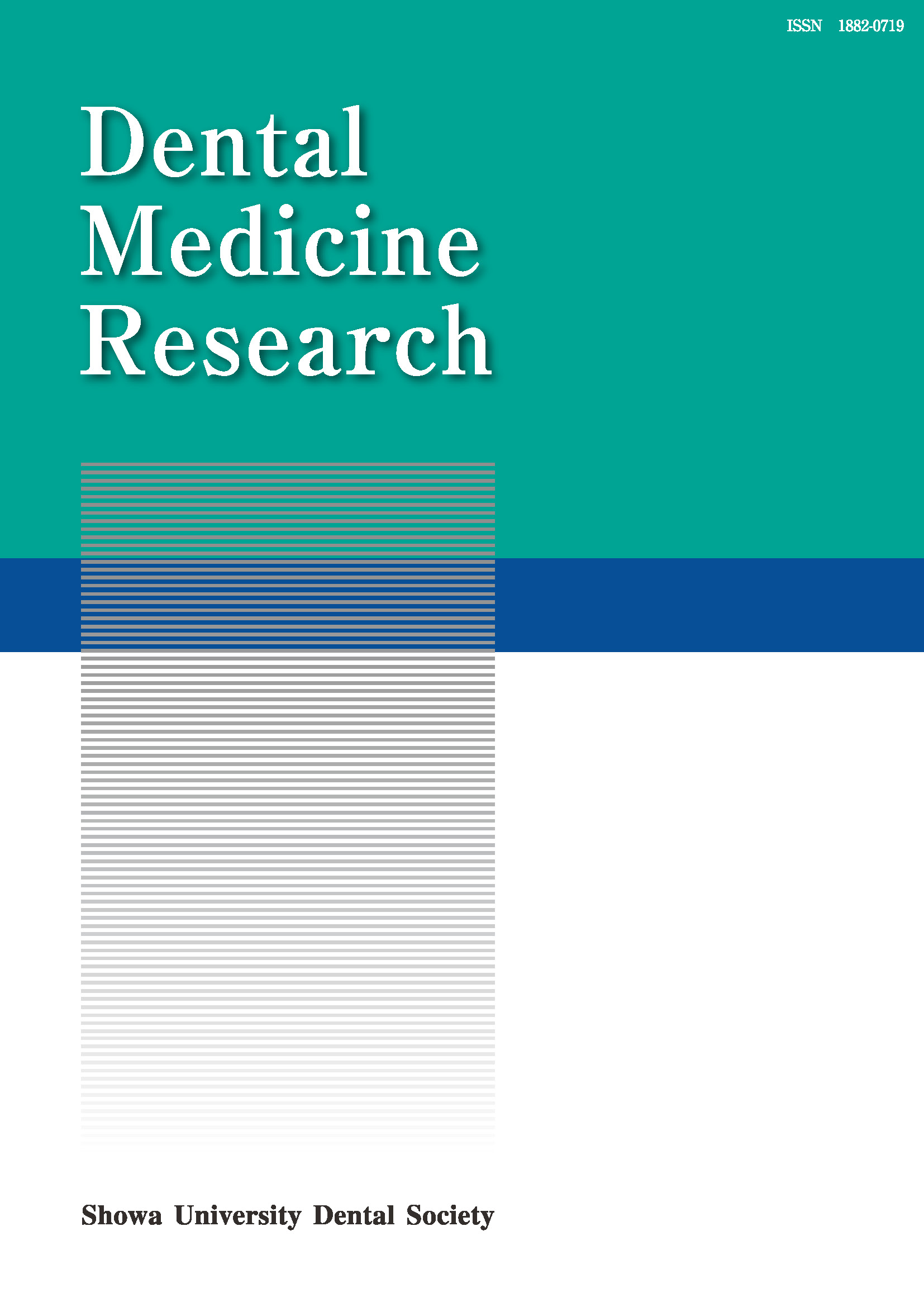Volume 30, Issue 2
Displaying 1-13 of 13 articles from this issue
- |<
- <
- 1
- >
- >|
Original
-
2010 Volume 30 Issue 2 Pages 109-116
Published: July 31, 2010
Released on J-STAGE: March 26, 2013
Download PDF (3443K) -
2010 Volume 30 Issue 2 Pages 117-123
Published: July 31, 2010
Released on J-STAGE: March 26, 2013
Download PDF (2028K) -
2010 Volume 30 Issue 2 Pages 124-128
Published: July 31, 2010
Released on J-STAGE: March 26, 2013
Download PDF (2241K) -
2010 Volume 30 Issue 2 Pages 129-135
Published: July 31, 2010
Released on J-STAGE: March 26, 2013
Download PDF (1091K)
Case Report
-
Application of the Duplicate Denture to Implants-supported Prosthesis for Extensive Maxillary Defect2010 Volume 30 Issue 2 Pages 136-141
Published: July 31, 2010
Released on J-STAGE: March 26, 2013
Download PDF (2132K) -
2010 Volume 30 Issue 2 Pages 142-150
Published: July 31, 2010
Released on J-STAGE: March 26, 2013
Download PDF (1870K) -
2010 Volume 30 Issue 2 Pages 151-155
Published: July 31, 2010
Released on J-STAGE: March 26, 2013
Download PDF (1832K) -
2010 Volume 30 Issue 2 Pages 156-160
Published: July 31, 2010
Released on J-STAGE: March 26, 2013
Download PDF (1847K) -
2010 Volume 30 Issue 2 Pages 161-166
Published: July 31, 2010
Released on J-STAGE: March 26, 2013
Download PDF (1526K) -
2010 Volume 30 Issue 2 Pages 167-177
Published: July 31, 2010
Released on J-STAGE: March 26, 2013
Download PDF (2658K)
Clinical Report
-
2010 Volume 30 Issue 2 Pages 178-182
Published: July 31, 2010
Released on J-STAGE: March 26, 2013
Download PDF (1429K)
Clinical Technology
-
2010 Volume 30 Issue 2 Pages 183-188
Published: July 31, 2010
Released on J-STAGE: March 26, 2013
Download PDF (1479K)
Clinical Hint
-
2010 Volume 30 Issue 2 Pages 189-194
Published: July 31, 2010
Released on J-STAGE: March 26, 2013
Download PDF (2949K)
- |<
- <
- 1
- >
- >|
